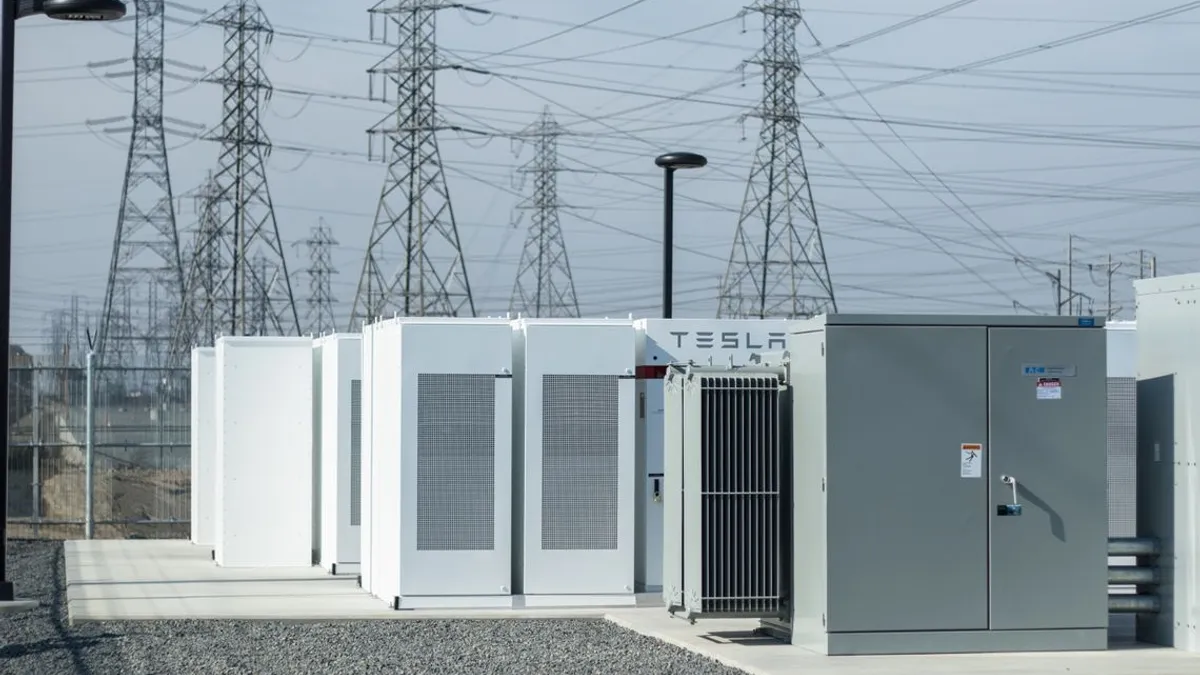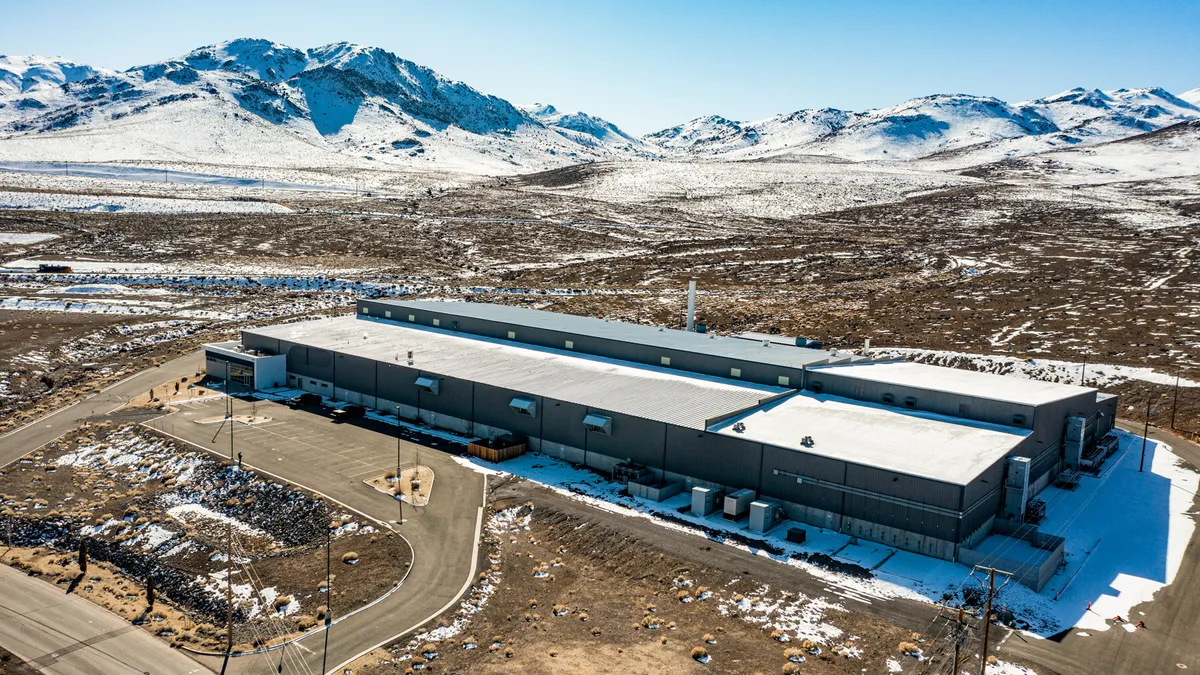UPDATE: May 30, 2019: Adds comments from NEC Energy Solutions Vice President of Marketing Roger Lin
Value-added services (VAS) have played a crucial role in the growth of the energy storage industry over the past decade, and a new report by Navigant Research suggests they will allow innovative companies to establish a leadership position in the expanding market.
"Energy Storage Value-Added Services Reduce Risk and Unlock Growth Opportunities," focuses on specific types of VAS, including operations and maintenance (O&M), warranties and performance guarantees.
The common link among these three types of services is that they shift the technological and financial risk of a project's performance from the customer to the battery hardware provider and system integrator that designs and builds the energy storage system (ESS), according to Navigant.
"The goal of these services is to reduce the risk that gets passed on to the customer and therefore enable more projects to get built, [and] to reduce the risk for the financiers, which are obviously pretty key," Alex Eller, senior research analyst at Navigant Research, told Utility Dive.
In order to stay competitive, Navigant Research recommends in its report that ESS providers continue to build on their existing VAS and maintain flexibility to fit their customers' needs.
VAS not only play an important role in the development of storage projects featuring lithium-ion batteries, the dominant battery technology in the industry, but also in getting projects involving emerging technologies, such as flow batteries, off the ground, the report said.
"In particular, the O&M piece is becoming more and more important as the industry continues its growth," Eller said.
Battery storage risk
To emphasize this point, Eller referenced the recent battery fire at a storage facility in Arizona, as well as a string of battery fires in South Korea over the past year that have reinforced the importance of maintaining battery systems properly.
"Part of O&M is the operations piece, which is making sure the system isn't being operated in a way that's either bad for the battery in terms of degrading them more quickly or bad for the battery in a way that could potentially cause safety risks," he said. "There are specific parameters depending on the type of lithium-ion battery you are working with. There are specific ways it needs to be operated and ways it shouldn't be operated to maintain safety."
While the report did not single out specific companies for their O&M or warranty services, Eller said vendors in the emerging technology sector are the most creative when it comes to their offerings in those areas.
The standard warranty in the industry is three-to-five years for lithium-ion batteries and 10 years for flow batteries, Eller said. He added that almost all system designers offer extended warranties that go way beyond the industry standard for an extra fee.
"The warranty piece also plays into the maintenance side because with lithium-ion batteries in particular, a big piece of the maintenance is maintaining the capacity of them. And that is usually done through battery augmentation by building in extra battery rack space to add new battery modules over time to offset the degradation that is happening to some of the other modules. That kind of levels that out and maintains the capacity," Eller said. "In order to stay within the terms of the warranty, you have to augment the capacity like that."
Growing market opportunities
The report also analyzed the potential evolution of these services, including opportunities for new business lines and revenue streams to be developed for both incumbents and new entrants in the market.
Similar to opportunities that arose in the solar photovoltaic sector, Eller expects that third-party providers will take over O&M services in the energy storage industry.
"One of the main points that I get at later in the report is the opportunities for third-party O&M services," he said. "So far, it's all been the system integrators and the developers building the projects. They typically provide the software that operates the system and O&M for the life of the project. That has its benefits as they are closely involved, but as the industry is growing, it's becoming more and more challenging for the operators to maintain all the projects that they have built. That's where the opportunity is for third-party providers to come in."
Eller expects local electrical contractors and system hardware providers with an understanding of the respective battery systems to benefit most from this opportunity.
“These value-added services are very important — they provide certainty and confidence in energy storage equipment performance, which are required in many cases for project financing," NEC Energy Solutions Vice President of Marketing Roger Lin told Utility Dive. "These can provide guarantees on uptime and availability, or on energy storage capacity on a power and energy basis," he said.
"One key trend is the emergence of more sophisticated warranties and guarantees that can provide assurance around market constructs like ‘performance score’ or battery warranties that can adapt to changing usage conditions," Lin noted.
"While many of these value-added services are simply pass-through, meaning that the guy that sold you the equipment just passes on the warranty to you from his supplier and could be piecemeal — that is, one warranty for the battery from Supplier A, a different one for the inverter from Supplier B, but none of them are backed by system integrator who sold you all the pieces. The better bet for the customer is a holistic set of VASs backed by the system integrator.”
Batteries serving the grid
Though the focus of Navigant's recent report has been on O&M, warranties and performance guarantees, other VAS, in particular grid services, have also played a part in the industry's growth.
For solar providers such as Hawaii-based ProVision, offering battery storage systems is critical, company President Marco Mangelsdorf told Utility Dive.
"As is similar on Oahu, Maui and Kauai, the percentage of PV permits issued by the County of Hawaii that include storage is 70-plus percent and rising," he said.
Utility companies across the country, including Honolulu-based Hawaiian Electric (HECO), are starting to launch grid service programs, which allow aggregators, such as Tesla or Sunrun, to use their fleet of distributed solar-plus-storage systems for demand response, fast frequency response, load shifting and other services benefiting the grid, along with ratepayers.
On April 1, HECO issued a request for proposal for aggregated grid services from customer-sited distribution energy resources.
"These grid services as they develop and expand over time will be one of the major components in the building of the true smart grid: Two-way power and services flow that will be a far cry from the over a century-old Edisonian centralized power generation and distribution model," Mangelsdorf said. "The key will be for the utility companies to provide adequate value to the DER system owners to make it worth their while."
U.S. energy storage deployment nearly doubled last year as the nation installed 350.5 MW/777 MWh, according to U.S. Energy Storage Monitor 2018 Year-in-Review. The figure represented a more than 80% increase from 2017 in terms of megawatt-hours.
This year, the storage market is expected to double once more, deploying 1,681 MWh, the report predicted.






















